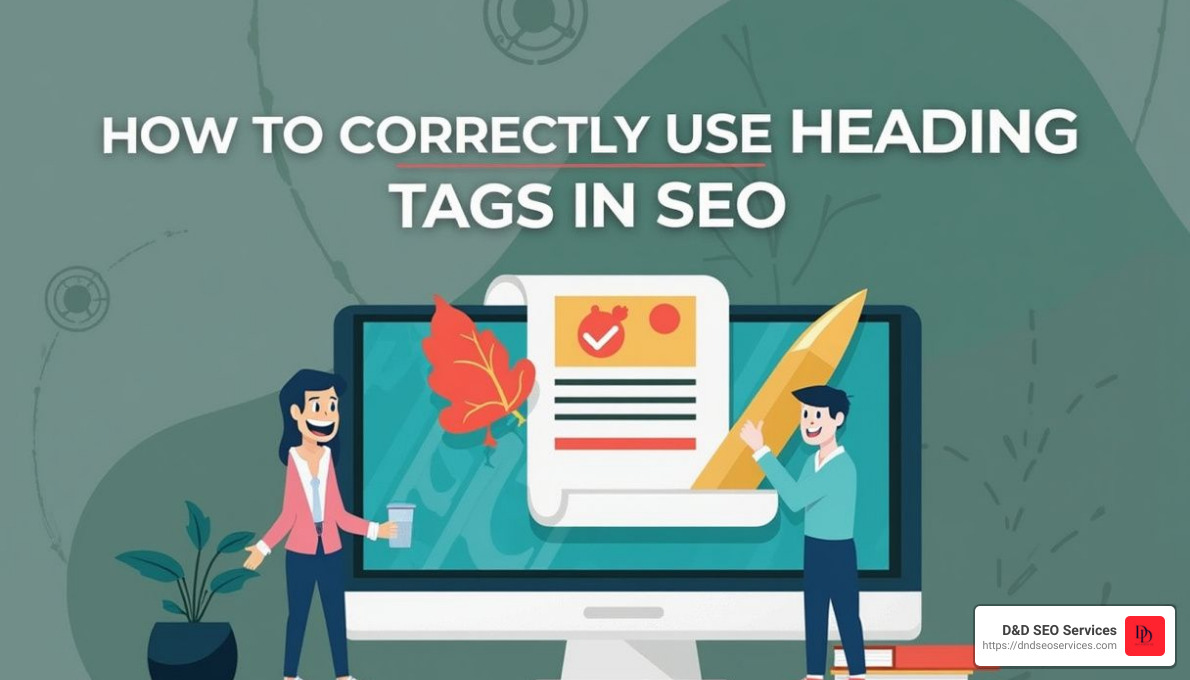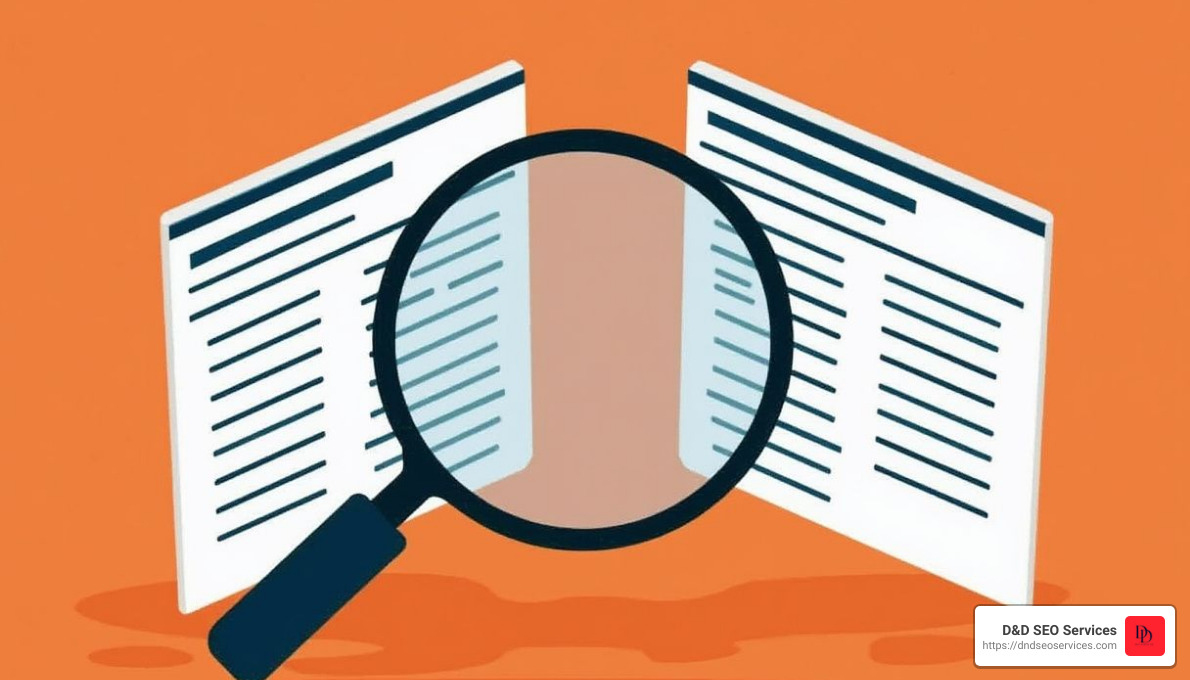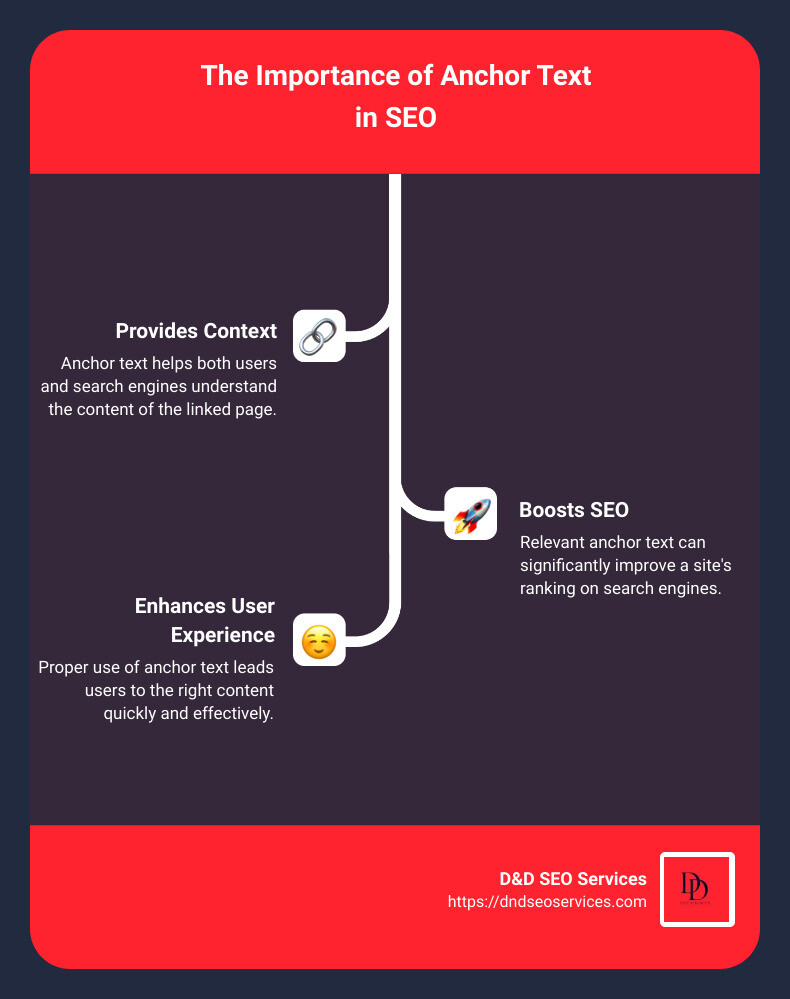Understanding Traffic Drop: Why it Matters
Solving Your Site’s Traffic Drop: A Step-by-Step Guide can seem overwhelming, but with the right approach, you can quickly diagnose and address the issue. Here are the key steps to help you get started:
- Check for Google Algorithm Updates
- Assess Specific Website Segments
- Investigate Google Penalties
- Consider Recent Site Changes
- Monitor Backlink Activity
Nothing feels worse than seeing your hard-earned SEO traffic plummet. But don’t panic! Just like a good detective, you need to methodically uncover the clues to figure out what happened and how to fix it. Realizing your site’s numbers are down can send you spiraling faster than an ice cream cone melting in July sun.
Traffic drops can occur for many reasons, such as changes in Google’s algorithm, issues with your content, or even technical glitches on your site. Each cause requires a different approach, and that’s why it’s crucial to systematically diagnose the problem.
I’m Danielle Birriel, and for the past ten years, I’ve helped businesses like yours steer the complexities of SEO traffic drops. In this guide, we’ll uncover all the possible culprits and equip you with the knowledge to restore and grow your traffic.
Basic Solving Your Site’s Traffic Drop: A Step-by-Step Guide terms:
- 6 Reasons to Invest in Professional Web Design Services
- Local SEO Keyword Research
- Local SEO Ranking Factors
Confirm the Traffic Drop
Before diving into solutions, it’s crucial to confirm the traffic drop accurately. Misinterpreting data can lead to unnecessary changes and further complications. Start by checking your analytics tools to ensure the drop is real and not just a glitch.
Check Google Analytics
Google Analytics is your first stop. Here’s how to get started:
- Verify Tracking Code: Ensure your tracking code is correctly installed on all pages. A missing or incorrect code can result in inaccurate data.
- Data Consistency: Compare data over different periods. Look at year-over-year and month-over-month trends to identify any anomalies.
- Segment Analysis: Break down traffic by source (organic, direct, referral) and device (desktop, mobile). This helps pinpoint whether the drop is isolated to a specific segment.
Pro Tip: Use the “Annotations” feature in Google Analytics to mark significant changes or updates. This provides context when reviewing data.
Verify with Other Tools
While Google Analytics is powerful, cross-referencing with other tools ensures data accuracy and provides additional insights.
- Google Search Console: Check for any manual actions, crawl errors, or indexing issues that might be affecting your traffic.
- Third-Party Tools: Tools like Moz, Ahrefs, or SEMrush can provide additional data on keyword rankings and backlink profiles. These insights help verify if the drop is due to search engine visibility issues.
Case Study: A client noticed a 30% drop in traffic. By cross-referencing Google Analytics with Google Search Console, they found a significant crawl error affecting multiple pages. Fixing this issue restored their traffic within weeks.
Key Takeaways
- Ensure Data Accuracy: Confirm your tracking setup and cross-reference with multiple tools.
- Identify Patterns: Look for trends across different segments and time frames.
- Use Annotations: Mark significant changes to provide context for data analysis.
Next, we’ll dig into identifying the root cause of the traffic drop, focusing on seasonal trends, demand dynamics, and search rank positions.
Identify the Cause of the Traffic Drop
Once you’ve confirmed the traffic drop, the next step is to identify its cause. This involves understanding seasonal trends, demand dynamics, and search rank positions. Let’s break these down.
Seasonal Trends
Not every drop in traffic signals a problem. Sometimes, it’s just the nature of your business. For instance, if you sell winter coats, expect a traffic dip in summer.
- Year-Over-Year Comparison: Look at your traffic data from the same period in previous years using Google Analytics. If the patterns match, it’s likely a seasonal issue.
- Google Search Console: Use this tool to compare impressions and clicks over similar periods. Consistent patterns indicate seasonality.
Example: A client selling Christmas decorations noticed a traffic drop in January. By comparing data from previous years, they confirmed it was a seasonal decline.
If you identify a seasonal trend, consider diversifying your product range to maintain traffic throughout the year.
Demand Dynamics
Sometimes, traffic drops because users lose interest in your content or products. This could be due to changing trends or a shift in user preferences.
How to Check Demand Dynamics:
- Google Search Console: Look at the dynamics of impressions and clicks. If both metrics drop, it suggests decreased user interest.
- Content Relevance: Evaluate your content’s relevance. Are you addressing current user needs and interests? Tools like Google Trends can help you understand what users are searching for.
Case Study: A blog on travel destinations saw a traffic drop. By analyzing search trends, they found a shift in interest towards local travel due to COVID-19. Updating their content to focus on local destinations helped regain traffic.
Search Rank Positions
Your website’s position in search results significantly impacts traffic. A drop in rankings can lead to fewer clicks and visits.
How to Check Search Rank Positions:
- Google Search Console: Check your keyword rankings. Look for any significant drops in position.
- Keyword Analysis: Identify which keywords have dropped in rank. This can be done in the “Queries” tab of Google Search Console.
Example: An e-commerce site noticed a traffic drop. By checking Google Search Console, they found a drop in rankings for their top keywords. Adding relevant keywords back into their content and meta tags helped improve their positions.
Pro Tip: Regularly monitor your search rankings and adjust your SEO strategy accordingly.
By understanding these factors, you can pinpoint the root cause of your traffic drop and take targeted actions to address it.
Next, we’ll discuss how to solve your site’s traffic drop by conducting a technical SEO audit, reviewing content quality, analyzing backlink profiles, and checking for algorithm updates.
Solving Your Site’s Traffic Drop: A Step-by-Step Guide
Once you’ve identified the cause of your traffic drop, it’s time to fix it. Here’s how you can do it, step-by-step.
Conduct a Technical SEO Audit
A technical SEO audit helps ensure that search engines can crawl and index your site efficiently.
Key Areas to Focus On:
-
Crawlability: Use tools like Screaming Frog to check if all your important pages are being crawled. Ensure your
robots.txtfile is not blocking critical pages. -
Site Speed: Slow loading pages can hurt your rankings. Use Google PageSpeed Insights to identify and fix speed issues.
-
Mobile-Friendliness: With more users browsing on mobile, a mobile-friendly site is crucial. Use Google’s Mobile-Friendly Test to check your site’s mobile compatibility.
Example: A client found that their site speed was slow due to unoptimized images. After compressing images and reducing server response times, their traffic improved.
Review Content Quality
Content is king in SEO. High-quality content that meets user intent can boost your rankings and traffic.
Steps to Improve Content Quality:
-
Content Updates: Regularly update your content to keep it relevant. Add new information, statistics, and insights to keep it fresh.
-
User Intent: Ensure your content matches what users are searching for. Use tools like Google Trends to understand current user interests.
-
Engagement: High engagement signals to Google that your content is valuable. Encourage comments, shares, and likes.
Case Study: A travel blog saw a drop in traffic. They updated their articles to focus on post-pandemic travel trends, which helped regain their audience.
Analyze Backlink Profile
Backlinks are a major ranking factor. Ensuring you have quality backlinks and removing harmful ones is crucial.
Steps to Analyze and Improve Backlinks:
-
Backlink Quality: Use tools like Ahrefs to check the quality of your backlinks. Look for links from reputable, relevant sites.
-
Spammy Links: Identify and disavow spammy or low-quality links that could be harming your site. Use Google’s Disavow Tool.
-
Disavow Process: Create a list of harmful links and submit it through the Disavow Tool. Document your efforts to remove these links.
Example: An e-commerce site noticed a drop in traffic due to spammy backlinks. After disavowing these links, they saw an improvement in their rankings and traffic.
Check for Algorithm Updates
Google frequently updates its algorithms, which can impact your site’s rankings and traffic.
Steps to Stay Updated:
-
Google Core Updates: Monitor industry news and Google’s Webmaster Central Blog for announcements on core updates.
-
Search Algorithm Changes: Use tools like MozCast to track changes in search engine algorithms.
-
Adjustments: If an update has affected your site, review the guidelines and adjust your SEO strategy accordingly.
Pro Tip: Not all traffic drops are due to algorithm updates. Analyze your site thoroughly before making changes.
By following these steps, you can effectively address the issues causing your traffic drop and improve your site’s performance.
Next, we’ll discuss additional factors to consider, such as changes in Google search results, competitor analysis, and technical errors.
Additional Factors to Consider
When dealing with a traffic drop, it’s crucial to consider various additional factors that might be impacting your site’s performance. These include changes in Google search results, competitor analysis, and technical errors. Let’s explore each one.
Google Search Results Changes
Google’s search results are constantly evolving, and these changes can impact your site’s visibility.
Informational Blocks: Google’s search results now feature more informational blocks like featured snippets, knowledge panels, and “People Also Ask” sections. These can push organic listings further down the page, reducing your click-through rates.
Google Ads: The presence of Google Ads at the top of search results can also impact your organic traffic. If more ads are showing for your target keywords, it can reduce the visibility of your organic listings.
Video Blocks: The inclusion of video results in search can divert traffic away from traditional web pages. If your content isn’t optimized for video, you might be missing out on this traffic.
Example: A cooking blog saw a drop in traffic when Google started showing more video recipes at the top of search results. By creating and optimizing video content, they regained some of their lost traffic.
Competitor Analysis
Understanding what your competitors are doing can provide valuable insights and help you adjust your strategy.
Competitor Rankings: Use tools like SEMrush or Ahrefs to track your competitors’ rankings for your target keywords. Are they outranking you? If so, analyze their content and backlinks to understand why.
SEO Strategies: Look at your competitors’ SEO strategies. Are they producing more engaging content? Do they have a stronger backlink profile? Are they better optimized for mobile? Use this information to improve your own site.
Case Study: An online retailer noticed a traffic drop and found that a competitor had launched a new content marketing campaign. By analyzing the competitor’s strategy and improving their own content, the retailer managed to recover and even surpass their previous traffic levels.
Technical Errors
Technical issues can severely impact your site’s performance and should not be overlooked.
Server Issues: Server downtime or slow response times can lead to a drop in traffic. Use tools like Pingdom to monitor your server’s performance.
Broken Links: Broken links can create a poor user experience and hurt your SEO. Use tools like Screaming Frog to identify and fix broken links on your site.
Crawl Errors: Google Search Console is your best friend here. Check for crawl errors and fix them promptly. Ensure that your important pages are being indexed correctly.
Example: A tech blog saw a 20% drop in traffic due to a large number of broken links after a site redesign. By identifying and fixing these links, they were able to restore their traffic levels.
By considering these additional factors, you can gain a more comprehensive understanding of what might be causing your traffic drop and take effective steps to address it.
Next, let’s move on to frequently asked questions about traffic drops to further clarify any lingering doubts you might have.
Frequently Asked Questions about Traffic Drops
How to do traffic drop analysis?
When you notice a sudden drop in your website traffic, conduct a thorough analysis to identify the cause. Here’s a step-by-step approach:
-
Google Analytics: Start by checking Google Analytics to confirm the traffic drop. Look for any discrepancies or anomalies in your data.
-
Search Console: Use Google Search Console to analyze your site’s performance. Check for any notifications about penalties or crawl errors.
-
Rank Tracking: Monitor your keyword rankings using tools like Ahrefs or SEMrush. A sudden drop in rankings can indicate issues with your site or algorithm changes.
-
Seasonality and Demand: Compare your traffic data year-over-year to rule out seasonal trends. Analyze whether there’s a drop in user interest or demand for your content, products, or services.
-
Technical SEO Audit: Conduct a technical audit to identify any issues with crawlability, site speed, or mobile-friendliness.
-
Backlink Profile: Use tools like Ahrefs to check for lost or spammy backlinks. A sudden loss of high-quality backlinks can impact your traffic.
By following these steps, you can pinpoint the reasons behind the traffic drop and take corrective actions.
Why is Google suddenly dropping website traffic?
Several factors can cause a sudden drop in your website traffic from Google:
-
Algorithm Updates: Google frequently updates its algorithms, which can affect your rankings. Stay updated with the latest changes by following resources like Search Engine Land.
-
Manual Penalties: Check Google Search Console for any manual action notifications. Penalties can result from violating Google’s guidelines, such as using black-hat SEO techniques.
-
Hosting Issues: Server downtime or slow response times can impact your traffic. Use monitoring tools like Pingdom to ensure your server is performing optimally.
-
De-Ranking: Sometimes, your site may get de-ranked due to poor content quality, loss of backlinks, or increased competition. Regularly update your content and build high-quality backlinks to maintain your rankings.
-
Technical SEO Issues: Crawl errors, broken links, or issues with your robots.txt file can prevent Google from indexing your site correctly. Regularly audit your site for these issues.
By understanding these factors, you can better prepare and respond to sudden traffic drops.
Why is my SEO traffic dropping suddenly?
Sudden drops in SEO traffic can be alarming, but they often have identifiable causes:
-
Algorithm Updates: Google’s algorithm changes can affect your site’s rankings. Tools like MozCast can help you stay informed about these updates.
-
Competitor Outranking: Your competitors might be outranking you for your target keywords. Use tools like Ahrefs to analyze their strategies and improve your own.
-
Technical SEO Issues: Crawl errors, slow site speed, and mobile-friendliness can impact your SEO traffic. Regularly audit your site using tools like Screaming Frog.
-
Content Quality: Outdated or low-quality content can lead to a drop in traffic. Regularly update your content to ensure it meets user intent and search engine guidelines.
-
Backlink Profile: Losing high-quality backlinks or accumulating spammy links can hurt your SEO. Use Ahrefs to monitor and manage your backlink profile.
By addressing these issues, you can work towards recovering and improving your SEO traffic.
Next, let’s move on to frequently asked questions about traffic drops to further clarify any lingering doubts you might have.
Conclusion
At D&D SEO Services, we understand how crucial it is to maintain steady website traffic for your business. A sudden drop can be alarming, but with the right strategies and tools, you can identify and resolve the issues effectively.
We specialize in offering personalized SEO strategies custom to your unique needs. Whether it’s a technical SEO audit, content quality review, or backlink analysis, our team has the expertise to help your site recover and thrive.
Why Choose D&D SEO Services?
Local Expertise: As a Fort Myers-based company, we know the local market inside out. Our strategies are designed to resonate with your target audience, ensuring that your business stands out.
Customized Solutions: Every business is different. We create bespoke SEO strategies that align with your specific goals and needs. From local SEO to comprehensive digital marketing plans, we’ve got you covered.
Data-Driven Approach: We believe in the power of data. Our strategies are backed by thorough research and analytics. This ensures that every action we take is aimed at achieving measurable results.
Ongoing Support: SEO is not a one-time effort but an ongoing process. We offer continuous support to adapt to evolving algorithms and market trends, ensuring sustained growth for your business.
Get Started Today
Don’t let a traffic drop hold your business back. Partner with us to transform your digital presence and achieve sustainable growth.
Schedule a Free Consultation with us today to get started on your journey to success.
Together, we can turn the tide and get your traffic numbers climbing again. Let’s show the world what your business is capable of!







